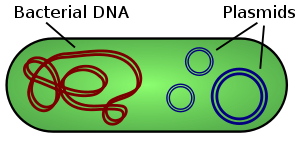2023-02-13 Hits(517)
Plasmids are DNA molecules in bacterial, yeast, actinomyces and other organisms except chromosomes, which exist in the cytoplasm (except yeast, whose plasmid exists in the nucleus). They have the ability to replicate autonomously, maintain a constant copy number even in the progeny cells, and express the carried genetic information in the form of closed-loop double-stranded DNA molecules.

1. Plasmid Extraction Method
Plasmid extraction involves the removal of RNA, the separation of the plasmid from the bacterial genomic DNA, and the removal of proteins and other impurities to obtain a relatively pure plasmid. There are various extraction methods for plasmid DNA, which can be divided into micro extraction, medium extraction and large extraction in terms of extraction yield, general extraction and kit extraction in terms of instruments used, and alkaline lysis and boiling method in terms of specific operation methods.
Each method has its advantages and disadvantages. Alkaline lysis method has the characteristics of high yield, wide application, rapid speed and high purity. The principle is: in the strong alkali (PH 12.0-12.6) environment, SDS destroys the cell wall and lyses the cell, and denatures the proteins, chromosomes and DNA of the host cell at the same time, and plasmid DNA is not easy to denature due to its small molecular weight and tightly entangled. When pH is adjusted to neutral, the natural conformation can be restored. Under high salt conditions, cell fragments, denatured proteins and chromosomal DNA precipitate and can be removed after centrifugation. Plasmid DNA in supernatant can be recovered from supernatant by means of ethanol precipitation or silica gel membrane specific adsorption.
2. Factors Affecting Plasmid Extraction
The purity and yield of plasmid extraction are related to many factors, such as the replication ability and stability of the plasmid itself, the type of host strain and culture conditions, the adequacy of cell lysis, antibiotics, the adsorption capacity of the silica membrane, and the proficiency of the experimenter.
3. Causes of Plasmid Deletion or Small Amount
Absence of plasmids in bacteria: some plasmids cannot exist stably in some strains and may be lost after repeated shaking of bacteria.
Strain aging: if it is glycerol bacteria, it is recommended to re-select colonies before liquid culture.
Low copy number of plasmids: some plasmids belong to the type of low copy, which will also result in low plasmid extraction amount. Try to use high copy plasmids with the same function, or increase the use of bacteria and reagents at the same time.
Insufficient alkaline cracking: in the process of plasmid extraction, the higher the bacterial volume, the higher the extraction amount. Excessive bacterial solution will lead to inadequate bacterial cracking, so the use of downstream extraction reagents can be appropriately increased.
4. Causes of Genomic Contamination in Plasmids
Genome contamination is generally caused by excessive operation. If the mixing is carried out in the way of vortex oscillation in order to improve the mixing effect, genomic DNA will be cut into small fragments, which will be regenerated during the neutralization process and retained in the supernatant and recycled together with plasmid DNA. Therefore, in the process of plasmid extraction, the action should be as gentle as possible.